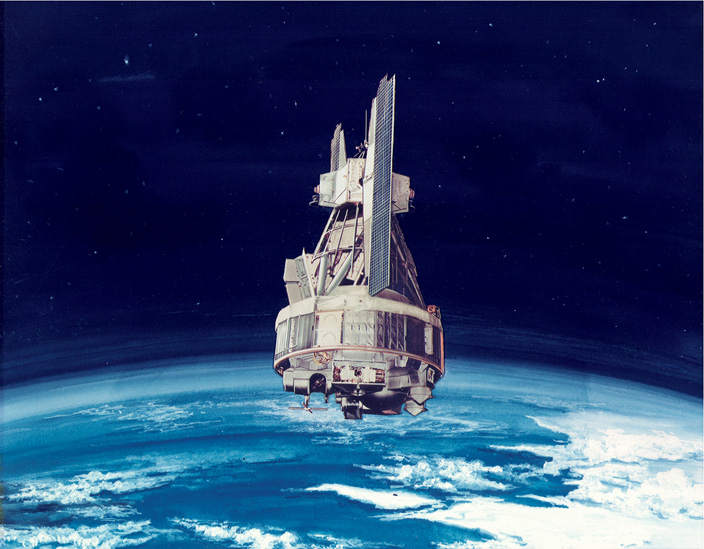Missions
Nimbus III

Artist's rendering of the Nimbus III spacecraft.
Nimbus III
- Launched on April 14, 1969
- NASA's first successful launch and use of space nuclear power
- Early weather satellite
- Provided first orbital measurements of: air pressure, solar ultraviolet radiation, ozone layer and sea ice
- Collected meteorological data for two and a half years
Powered by:
10,500 solar cells and two SNAP-19B3 RTGs
Goals:
Nimbus-III was a replacement for Nimbus B which was destroyed in a launch failure. Nimbus-3 was the first US weather satellite to make day and night global measurements from space of temperatures at varying levels in the atmosphere. Other mission objectives included providing support for international programs designed to gather vital oceanographic data, and large-scale atmospheric data for use in newly designed computer prediction models of the atmosphere.
Accomplishments:
Nimbus III carried instruments to measure atmospheric temperature, water vapor and ozone with altitude, as well as the amount of ultraviolet radiation reaching our atmosphere from the sun. The craft also carried infrared sensors used to provide images at night. In addition, Nimbus III had a system used to locate, identify and relay transmissions from data gathering buoys on the surface of the Earth. Nimbus III was placed in Sun-synchronous orbit and transmission of data from all of the experiments was completed as scheduled.
